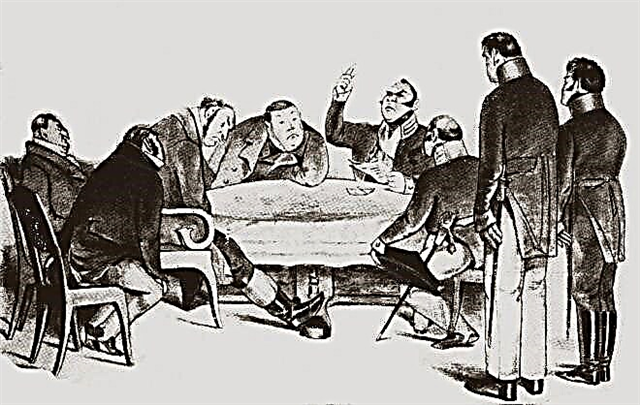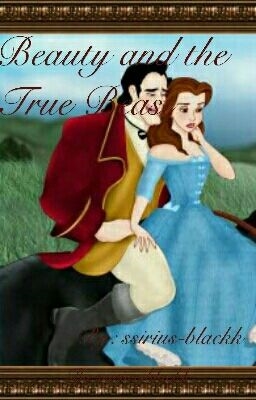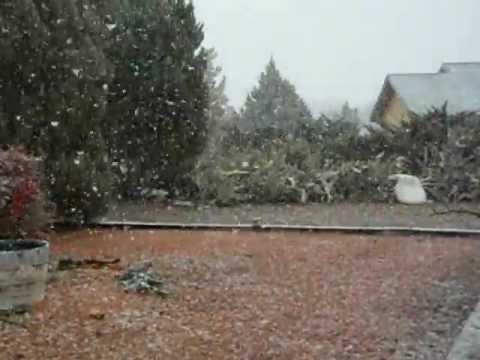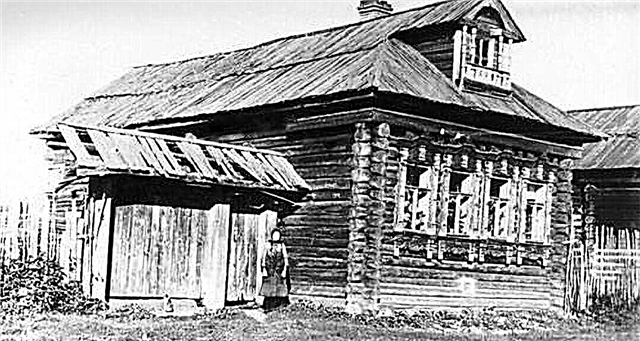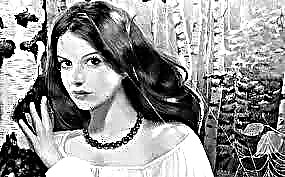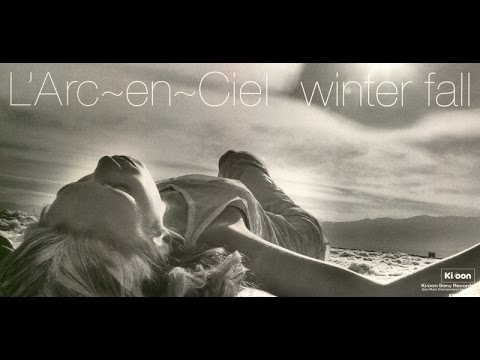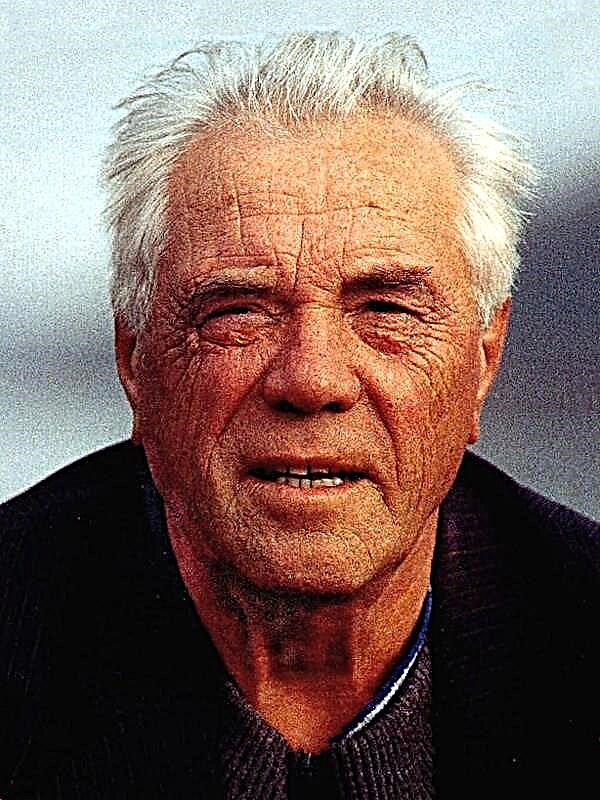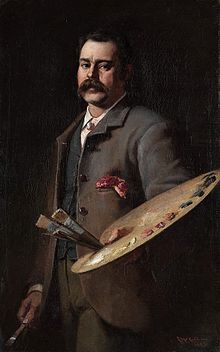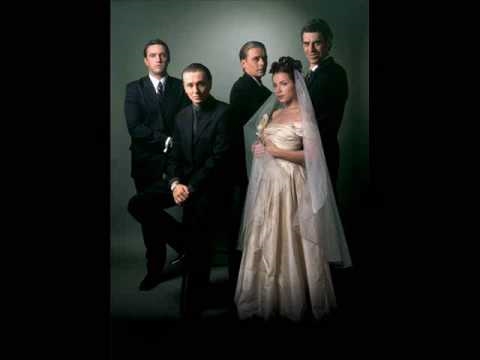Vladimir Mayakovsky is a brilliant poet of the first half of the twentieth century. This is a man with a very tragic fate. He was a supporter of the global idea that “art changes the world,” but, in essence, it turned out completely different. Any creativity is congenial to the era. And Mayakovsky lived in a difficult, post-revolutionary time.
History of creation
He was a stranger among his own. In 1930, Vladimir Mayakovsky joined the RAAP. In the same year, he opened the exhibition “20 Years of Work”, but not one of the friends of the writers came to it, because he was a member of the Association of Proletarian Writers. In addition, the leader of the RAPP Vladimir Ermilov wrote a critical article on the work of Mayakovsky. This was a real shock to him. 1.5 months after these events, the poet committed suicide. The eternal struggle with society is reflected in his poetry. It is riddled with shocking and protesting. The poem "Nate!" is a vivid example to reinforce this idea, although it was written 17 years before. The genius of Vladimir Mayakovsky allowed him to see and feel a little more than ordinary people.
This poem was written in 1913 and relates to the early works of the poet. Mayakovsky was a rebel and a true revolutionary by nature. “Nate!” he wrote at age 20. The revolution of 1907, when the poet was in a transitional age, had a great influence on his worldview. As you know, adolescents have a more impressionable, labile psyche and are more easily affected. Accordingly, the poem "Nate!" - This is a challenge to the bourgeoisie.
Genre, direction, size
For Mayakovsky, futurism is a characteristic direction. Specifically for this poem, such features of futuristic poetry are characteristic as: contempt for conservatism, urbanism of the topic and shocking. The poet openly criticizes the behavior of the bourgeoisie. The work is permeated with a call for the creation of a completely new society, the basis of which is the Bolshevik ideology, the thirst for a new government. This is a true innovation of the early 20th century. The lyrical hero of the poem is a kind of “red matter”, a provocateur.
The work has the size of an accent verse and cross rhyme, which gives it a sense of freedom and revolutionary form.
Composition
The poem consists of three quatrains and one five-poem.
- The first shows a vivid disgust for the "flabby" bourgeois stupid society.
- In the next quatrain, the lyrical hero condemns the man for gluttony, and compares the woman with an oyster, devoid of any intelligence, because of her empty look.
- In the third quatrain and final five-passage there is a direct description of the crowd.
Images and Symbols
The core of the composition is the lyrical hero. He is the image of an ideal, exalted man who contemptuously looks down on the faceless biomass.
Society in a poem is devoid of depth of thought and does not at all appreciate the philosophical and political ideology that the poet put into his invaluable words. The crowd is presented in the poem as a parasite, "stoglavyvaya louse", which does not leave the poet alone. The highest pleasure he recognizes for himself to spit this gray mass in the face. They are far from him, like land from birds.
Themes and Issues
- The main theme of the work is moral and moral corruption of society. The lyrical hero speaks in disgust of those people who are “listeners” of his poems. In particular, it characterizes society as a consumer mechanism and nothing more. The problem of vulgarity and inertness of the worldview of the crowd creates its contrast with the image of the poet.
- The second motive of the poem is exaltation of art. It, according to the author, is absolutely priceless, intimate and inaccessible to the masses. It represents a kind of fragile, beautiful, treasured "casket" in which "priceless words" are stored.
- The author also touches on an eternal topic - poet and crowd. The Creator stands above people, he plays the role of a portrait of Dorian Gray: reflects the hidden vices of the inhabitants, shows their inner squalor.
Idea
The meaning of the work lies in the fact that society is such a mundane and materialized herd that it begins to actively parasitize, it brazenly craves only pleasure, stuffing the womb and falling into obscene entertainment. It is absolutely devoid of creation, the flight of thought. It seemed to be stuck somewhere in the distant, idle past, in the "era of balls."
All these ugly, snickering individuals wish to continue to sit on the neck of the Proletariat. They are like greenhouse plants, incapable of working and creating anything beautiful. Without the greenhouse, which is served by active workers, they will die.
The main goal of the lyrical hero is to serve the art that transforms people, makes them better.
Means of artistic expression
The main artistic instrument of expressiveness of the poem "Nate!" serves as an antithesis. The lyrical hero is an innovator and romantic by nature. It is opposed to a rotting, flabby society. This tool is manifested here in the form of the pronouns "I" and "we."
The poet also uses an excellent comparison, describing the image of a woman: "You look at the oyster from the shells of things." By this he shows that stupid thingism and spiritual emptiness of a lady; she is an "empty vessel."
In describing the crowd, Mayakovsky uses such an epithet as “dirty”, emphasizing its asociality, moral ugliness, and disfigurement.

